Take a dive into the Search Encrypt Mac virus issue and get an effective walkthrough to stop annoying browser redirects leading to searchencrypt.com web page.
Update:
Privacy on the Internet is a real buzzword and talk of the town these days. The numerous breach reports and questionably honest tactics of major data aggregates have been adding agitation to the discussion, encouraging users to look for services that deliver more anonymity than the instruments built into operating systems and web browsers. In pursuit of extra protection, though, those privacy-minded might choose the wrong tool. This caveat applies to Search Encrypt, a browser add-on that claims to hide one’s web searches from prying eyes of whoever wants to surveil, be it governmental eavesdroppers or identity thieves. When this extension is on board Safari, Chrome or Firefox on a Mac computer, it replaces the online navigation defaults with searchencrypt.com and doesn’t provide an easy way to revert the changes.
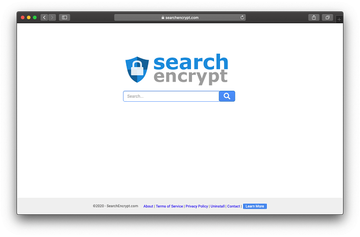
The mechanism of protection allegedly employed by Search Encrypt comes down to leveraging an advanced SSL encryption whenever a Mac user is looking up information on the Internet. Furthermore, according to the developers’ claims, all searches are wiped after half an hour of inactivity. While this seems like a fairly robust countermeasure for what remote observers may do, the big picture doesn’t look too comforting, to put it mildly. One of the serious giveaways in terms of this app’s real gist is about the way it is doing the rounds. Most people never actually download and install it – at least, that’s what they think. Here’s the thing: the Search Encrypt virus typically sneaks into a Mac without the admin’s awareness and consent. The technique that makes such a stealth possible is called bundling. In a nutshell, this is a means of cross-promoting software through multi-element install clients. Opting for the “express”, or “recommended”, setup workflow might get one’s computer infected with malware that’s kept out of sight.
Search Encrypt may re-infect your Mac multiple times unless you delete all of its fragments, including hidden ones. Therefore, it is recommended to download Combo Cleaner and scan your system for these stubborn files. This way, you may reduce the cleanup time from hours to minutes.
Download Now Learn how Combo Cleaner works. If the utility spots malicious code, you will need to buy a license to get rid of it.One of the ways the Search Encrypt extension drills its way into Google Chrome on Mac machines is through popups shown on ext.searchencrypt.com domain. This distribution route feels offensive because users are redirected to the site without opting for it. The landing page instructs visitors to hit the “Continue” button, which is followed by an audio prompt to click “Allow” and then “Add” to get started. This series of steps, in turn, forwards the browser to Search Encrypt download page on the Chrome Web Store. In other words, instead of adding the extension as per an informed decision, users are duped into doing it. The permissions it requires speak volumes about its real gist. It wants to be able to change the victim’s search settings to searchencrypt.com; read and modify all data on visited websites; tweak the privacy settings; and control apps, extensions, and themes.
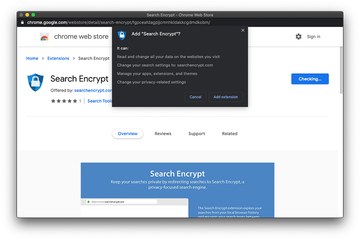
As soon as the Search Encrypt virus is in, it adds the related extension to the victim’s default web browser without asking for permission. This helper, or rather spoiler, object adjusts the Internet surfing routine on the host Mac to noxious malvertising activity. It overwrites the user’s preferences, including the search provider, new tab and homepage, and sets another URL instead. As a result, the web browsing will be stuck in a spiral of redirects to searchencrypt.com. Gauging by commonplace search engine design, the site in question is nothing out of the ordinary. It’s got a prominent search bar as well as a list of basic features of the underlying service.
When a keyword or phrase is entered in there, the service returns results of its own while also offering to retry the same search on other engines, such as Yahoo!, Bing, or Google. The trick is that there’s a notice saying that in the latter case the user will be rerouted away from the “privacy-enhanced search engine”. This ostensibly trivial remark is a component of the devious marketing, the goal being to emphasize the purported pros of using the rogue service. The irony is that instead of standing sentinel over one’s privacy, Search Encrypt does quite the opposite. Even judging by its official site, it intercepts all web searches, encrypts them and forwards the queries to its own servers. The “interception” part is particularly discouraging because it means the proprietors of this service know exactly what information the victim is looking for. Based on this data, the dodgy app generates targeted ads that show up on the results pages.
To recap, the Search Encrypt malware infiltrates Macs in a furtive fashion, hijacks the web browsers, tracks users’ web surfing activities, and imposes new Internet defaults. On top of that, it doesn’t yield to regular removal. The good news is that there is an effective workaround to eradicate the infection from Mac. Continue reading to get the relevant how-to’s.
Search Encrypt virus manual removal for Mac
The steps listed below will walk you through the removal of this malicious application. Be sure to follow the instructions in the specified order.
Expand the Go menu in your Mac’s Finder bar and select Utilities as shown below.
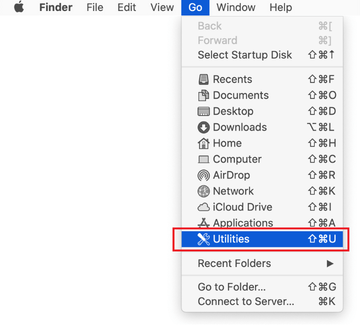
Locate the Activity Monitor icon on the Utilities screen and double-click on it.
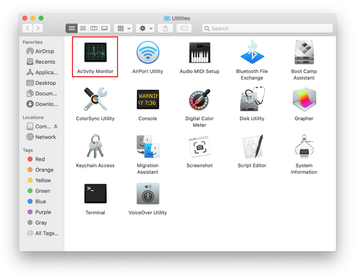
In the Activity Monitor app, look for Search Encrypt or another process that appears suspicious. To narrow down your search, focus on unfamiliar resource-intensive entries on the list. Keep in mind that its name isn’t necessarily related to the way the threat is manifesting itself, so you’ll need to trust your own judgement. If you pinpoint the culprit, select it and click on the Stop icon in the upper left-hand corner of the screen.
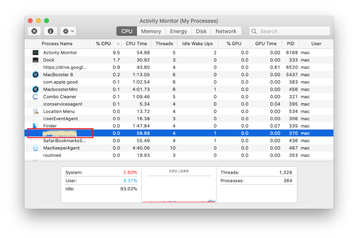
When a follow-up dialog pops up asking if you are sure you want to quit the troublemaking process, select the Force Quit option.
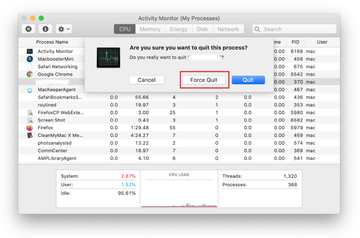
Click on the Go menu icon in the Finder again and select Go to Folder. You can as well use the Command-Shift-G keyboard shortcut.
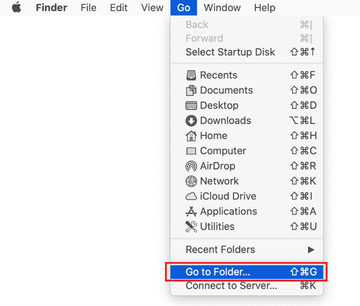
Type /Library/LaunchAgents in the folder search dialog and click on the Go button.
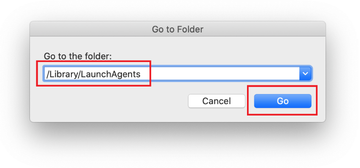
Examine the contents of the LaunchAgents folder for dubious-looking items. Be advised that the names of files spawned by malware may give no clear clues that they are malicious, so you should look for recently added entities that appear to deviate from the norm.
As an illustration, here are several examples of LaunchAgents related to mainstream Mac infections: com.pcv.hlpramc.plist, com.updater.mcy.plist, com.avickUpd.plist, and com.msp.agent.plist. If you spot files that don’t belong on the list, go ahead and drag them to the Trash.
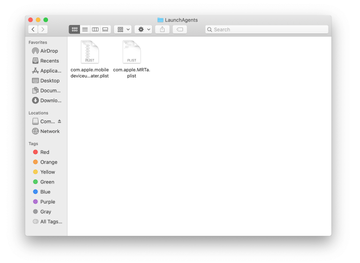
Use the Go to Folder lookup feature again to navigate to the folder named ~/Library/Application Support (note the tilde symbol prepended to the path).

When the Application Support directory is opened, identify recently generated suspicious folders in it and send them to the Trash. A quick tip is to look for items whose names have nothing to do with Apple products or apps you knowingly installed. A few examples of known-malicious folder names are LinkBranch, SystemSpecial, and IdeaShared.
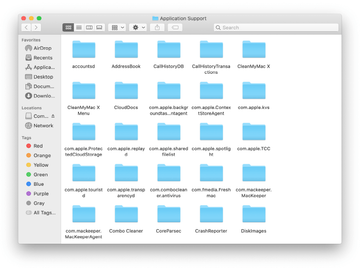
Enter ~/Library/LaunchAgents string (don’t forget to include the tilde character) in the Go to Folder search area.
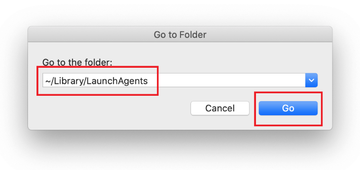
The system will display LaunchAgents residing in the current user’s Home directory. Look for dodgy items related to Search Encrypt virus (see logic highlighted in subsections above) and drag the suspects to the Trash.
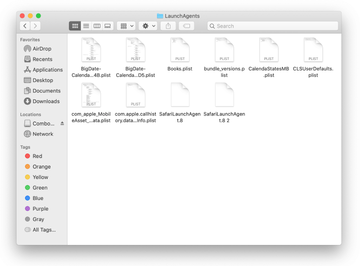
Type /Library/LaunchDaemons in the Go to Folder search field.
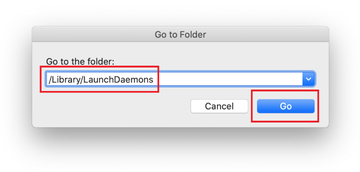
In the LaunchDaemons path, try to pinpoint the files the malware is using for persistence. Several examples of such items cropped by Mac infections are com.pplauncher.plist, com.startup.plist, and com.ExpertModuleSearchDaemon.plist. Delete the sketchy files immediately.
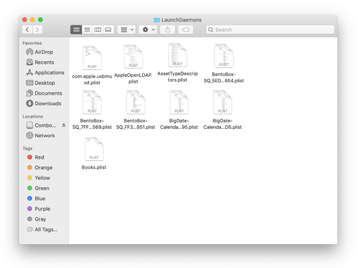
Click on the Go menu icon in your Mac’s Finder and select Applications on the list.
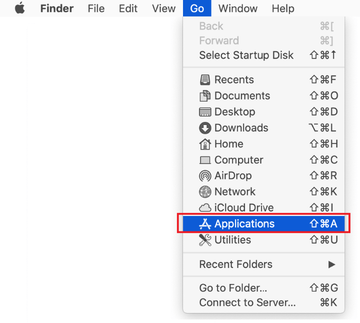
Find the entry for Search Encrypt or another app that clearly doesn’t belong there and move it to the Trash. If this action requires your admin password for confirmation, go ahead and enter it.

Expand the Apple menu and select System Preferences.
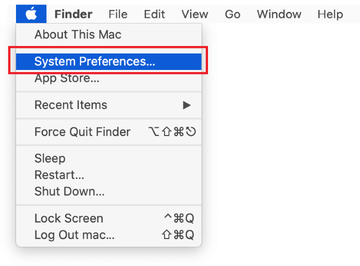
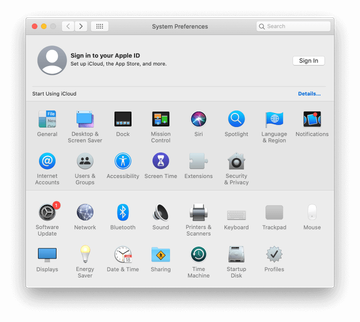
Proceed to Users & Groups and click on the Login Items tab.
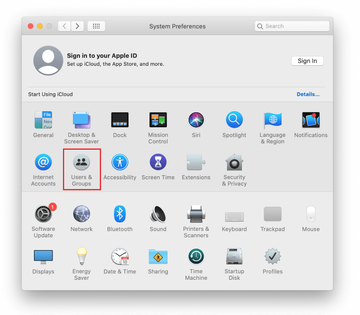
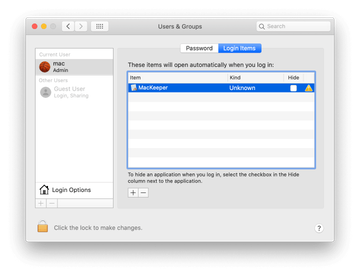
Now select Profiles under System Preferences. Look for a malicious item in the left-hand sidebar. Several examples of configuration profiles created by Mac adware include TechSignalSearch, MainSearchPlatform, AdminPrefs, and Chrome Settings. Select the offending entity and click on the minus sign at the bottom to eliminate it.
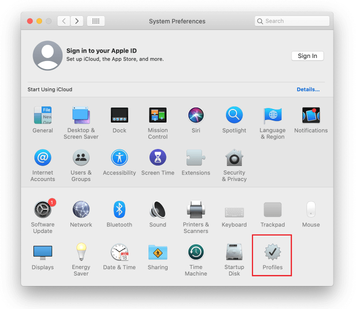
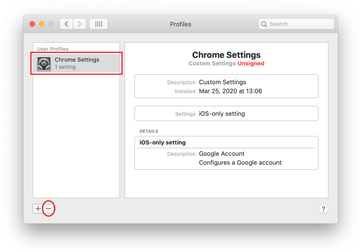
Get rid of browser redirects to searchencrypt.com
To begin with, the web browser settings taken over by Search Encrypt virus should be restored to their default values. Although this will clear most of your customizations, web surfing history, and all temporary data stored by websites, the malicious interference should be terminated likewise. The overview of the steps for completing this procedure is as follows:
- Remove Search Encrypt virus in Safari
- Open the browser and go to Safari menu. Select Preferences in the drop-down list
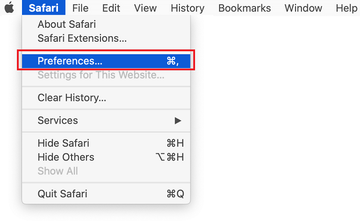
- Once the Preferences screen appears, click on the Advanced tab and enable the option saying “Show Develop menu in menu bar”.
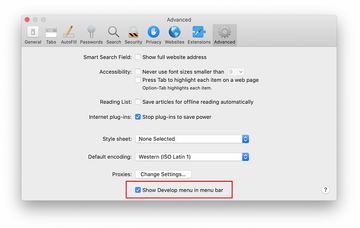
- Now that the Develop entry has been added to the Safari menu, expand it and click on Empty Caches.
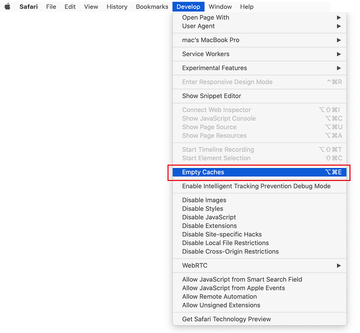
- Now select History in the Safari menu and click on Clear History in the drop-down list.
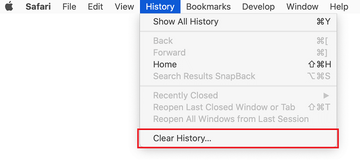
- Safari will display a dialog asking you to specify the period of time this action will apply to. Select all history to ensure a maximum effect. Click on the Clear History button to confirm and exit.

- Go back to the Safari Preferences and hit the Privacy tab at the top. Find the option that says Manage Website Data and click on it.

- The browser will display a follow-up screen listing the websites that have stored data about your Internet activities. This dialog additionally includes a brief description of what the removal does: you may be logged out of some services and encounter other changes of website behavior after the procedure. If you’re okay with that, go ahead and click on the Remove All button.
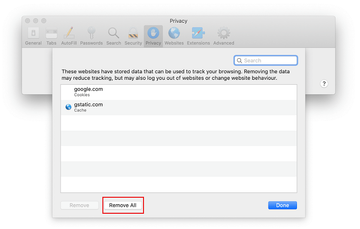
- Restart Safari
- Open the browser and go to Safari menu. Select Preferences in the drop-down list
- Get rid of Search Encrypt virus in Google Chrome
- Open Chrome, click the Customize and control Google Chrome (⁝) icon in the top right-hand part of the window, and select Settings in the drop-down
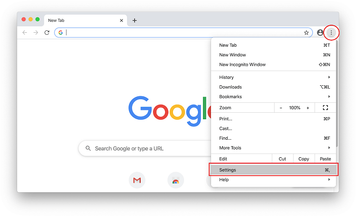
- When on the Settings pane, select Advanced
- Scroll down to the Reset settings section.
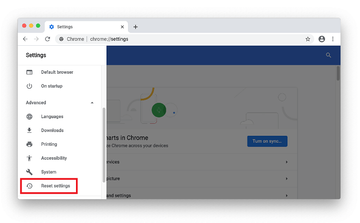
- Confirm the Chrome reset on a dialog that will pop up. When the procedure is completed, relaunch the browser and check it for malware activity.
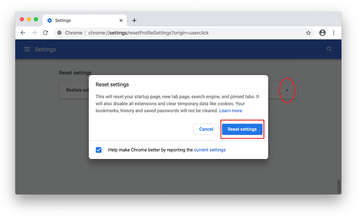
- Open Chrome, click the Customize and control Google Chrome (⁝) icon in the top right-hand part of the window, and select Settings in the drop-down
- Remove Search Encrypt from Mozilla Firefox
- Open Firefox and go to Help – Troubleshooting Information (or type about:support in the URL bar and press Enter).
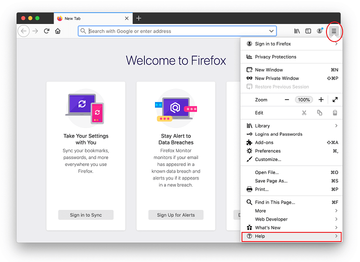
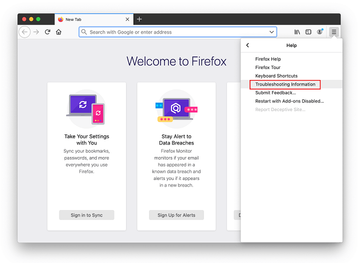
- When on the Troubleshooting Information screen, click on the Refresh Firefox button.
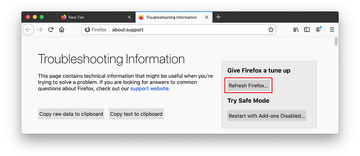
- Confirm the intended changes and restart Firefox.
- Open Firefox and go to Help – Troubleshooting Information (or type about:support in the URL bar and press Enter).
Get rid of Search Encrypt virus using Combo Cleaner removal tool
The Mac maintenance and security app called Combo Cleaner is a one-stop tool to detect and remove Search Encrypt virus. This technique has substantial benefits over manual cleanup, because the utility gets hourly virus definition updates and can accurately spot even the newest Mac infections.
Furthermore, the automatic solution will find the core files of the malware deep down the system structure, which might otherwise be a challenge to locate. Here’s a walkthrough to sort out the Search Encrypt issue using Combo Cleaner:
Download Combo Cleaner installer. When done, double-click the combocleaner.dmg file and follow the prompts to install the tool onto your Mac.
By downloading any applications recommended on this website you agree to our Terms and Conditions and Privacy Policy. The free scanner checks whether your Mac is infected. To get rid of malware, you need to purchase the Premium version of Combo Cleaner.
Open the app from your Launchpad and let it run an update of the malware signature database to make sure it can identify the latest threats.
Click the Start Combo Scan button to check your Mac for malicious activity as well as performance issues.
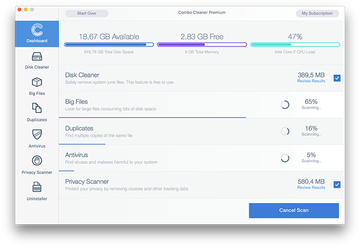
Examine the scan results. If the report says “No Threats”, then you are on the right track with the manual cleaning and can safely proceed to tidy up the web browser that may continue to act up due to the after-effects of the malware attack (see instructions above).
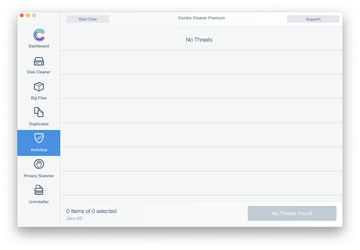
In case Combo Cleaner has detected malicious code, click the Remove Selected Items button and have the utility remove Search Encrypt threat along with any other viruses, PUPs (potentially unwanted programs), or junk files that don’t belong on your Mac.
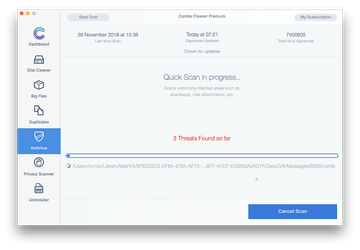
Once you have made doubly sure that the malicious app is uninstalled, the browser-level troubleshooting might still be on your to-do list. If your preferred browser is affected, resort to the previous section of this tutorial to revert to hassle-free web surfing.
FAQ
What is Search Encrypt on Mac?
Search Encrypt is a rogue service that claims to add a layer of privacy to a Mac user’s web search activities but ends up hijacking their default browser and snooping on sensitive web surfing information. It is manifested as an extension supporting Safari, Google Chrome, and Mozilla Firefox. This entity redirects all searches to ad-supported landing page at searchencrypt.com without asking for permission.
Whereas automatic encryption of search terms is an enticing feature overall, the dubious app under scrutiny provides it at the expense of the victim’s proper Internet experience. It overrides the browsing preferences to promote its own service crammed up with sponsored links.
Furthermore, most of the affected Mac users don’t even know what functionality Search Encrypt purports to accommodate, because the unwanted application is installed behind the scenes. It usually accompanies other software, arriving via the same installers that furtively push a bundle of programs rather than one. Figuratively speaking, this PUA (potentially unwanted application) is a wolf in sheep’s clothing and should be avoided.
Is Search Encrypt malware?
Although searchencrypt.com, the website associated with this controversial service, doesn’t have any offensive functionality as such and therefore poses no risk to visitors, the underlying Mac application is definitely malicious. It mostly infiltrates systems without the users’ knowledge and then takes over the web search activity in the default browser (Safari, Chrome, or Firefox). It may interfere with other preferences as well, including the homepage and new tab page. The app also adds its executable to the Login Items so that the intrusive influence makes itself felt right after every Mac startup or reboot instance and cannot be easily terminated.
One more thing on the minus side of Search Encrypt is that it engages in sneaky data harvesting when running inside a computer. In particular, it keeps a record of all search requests and may additionally monitor which websites the victim goes to. This information is aggregated and processed for targeted advertising via the landing page. Getting back to the original question, Search Encrypt exhibits enough shady characteristics to be categorized as malware or adware.
Why does Search Encrypt keep coming up?
The notorious persistence of Search Encrypt stems from the fact that it creates a new configuration profile on the Mac without letting you know. Whilst this is generally a benign and really useful feature allowing power users or IT administrators to adjust their Macs to specific tasks, cybercriminals at the helm of adware campaigns have been abusing it for quite some time. Search Encrypt operators follow suit.
Once inside a Mac, the infection adds a rogue profile called “AdminPrefs” or similar. Disabling or removing the Search Encrypt extension in the contaminated web browser is only a short-time measure as long as this configuration profile remains active. The culprit will reappear shortly. To top it off, reverting to the correct custom settings (default search engine, homepage, etc.) isn’t possible either because they are managed by the adware’s profile.
To get around this roadblock, you should go to System Preferences and click ‘Profiles’. Select the harmful entry under ‘Device Profiles’ in the left-hand section of the pane and click the “-” (minus) button to delete it. Then, follow the steps in the guide above to uninstall Search Encrypt and fix the web browser misconfigured by the virus.
